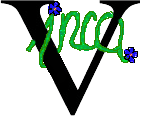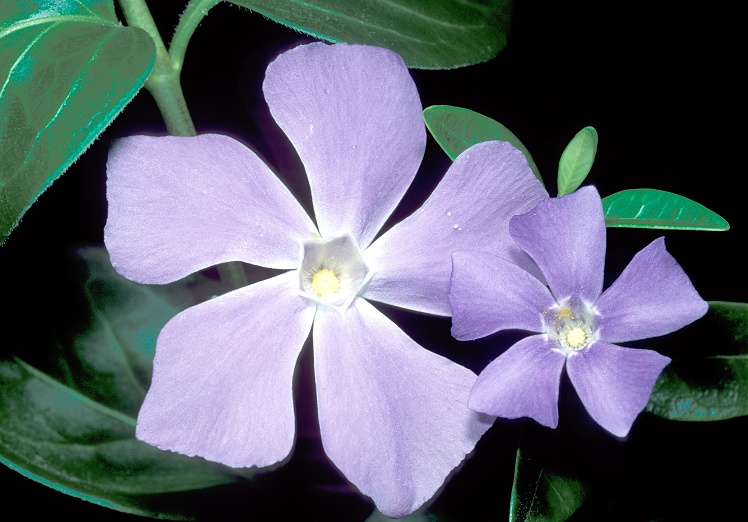
in
short.
'On the head a periwinkle garland, with two threads of big pearls weaved in it'.
Luca Pulci, La Giostra fatta in Firenze dal magnifico Lorenzo de' Medici il vecchio l'anno 1468.
|
|
in |
In testa una ghirlanda d'erba vinca, avvoltovi intorno due fila di perle grosse di numero. 'On the head a periwinkle garland, with two threads of big pearls weaved in it'. Luca Pulci, La Giostra fatta in Firenze dal magnifico Lorenzo de' Medici il vecchio l'anno 1468. |
An outline presentation of the project. |
 |
 |
 |
 |
by Manuel Barbera (manuel.barbera@bmanuel.org), Elisa Corino (elisa.corino@tin.it) and Carla Marello (carla.marello@unito.it).
VINCA is a Corpus of Native Written Italian freely available and serchable online.
Devised by Manuel Barbera and Carla Marello, soon joined by Elisa Corino, VINCA was born in 2004 as control corpus for VALICO, an Italian International Learner Corpus.
The acronym VINCA stands for "Varietà di Italiano di Nativi Corpus Appaiato", i.e. 'Control Corpus of the Native Varieties of the Italian Language'.
Its main goals are
+ to offer a survey of text types that teachers of Italian
make their students write;
+ to show how italian people of different age and school
grade write in their own language;
+ to become, in the future, a POS- and error-tagged corpus
belonging to a larger set of POS-tagged corpora of contemporary Italian;
+ to work as a control corpus for VALICO, the corpus
of Italian as a foreign and a second language, being the bulk of the texts originated from
the same tasks (comic strips drawn by Leonardo Borazio);
+ to provide Italian linguists with new insights into
the textual characteristics of written productions.
The name is partly due to a literary reference, the Giostra
di Lorenzo de Medici il vecchio (The joust of Lorenzo de Medici the Elder).
The reference to Luca Pulci (the elder brother of the better known Luigi) is of
particular interest for two main reasons. First of all it allows us to metaphorically
enter into the Medicean court where the idea of Italian philology itself was born.
Secondly winkles and pearls are paired in the garland, and it is hoped that the
pearls (either white or black) in the VINCA corpus will be plentiful as well.
Vinca (Linnaeus) belongs to the family of Apocynacee
which includes six main species, among them: the Vinca erbacea (Waldstein et Kitaibel)
[It. pervinca, De. Immergrün, En. periwinkle, Fr. pervenche], the Vinca minor
(Linnaeus) [It. pervinca, De. großes Immergrün, En. smaller periwinkle, Fr. petite
pervenche] and the Vinca major (Linnaeus) [It. vinca maggiore (or
pervinca) , De. großes Immergrün, En. greater periwinkle, Fr. grande
pervenche].
If the It. pervinca (En. periwinkle) is not a specific botanical term,
the rarer and archaic vinca results to be even more generic, as it may refer
to every evergreen trailer with blue flowers, just as periwinkles.

Greater and smaller periwinkle together. From the Nature Conservancy (The Invasive Species Initiative) site.
Supported by this literary indeterminacy of the Italian vinca,
a different flower (belonging to the Convolvulaceae family) was chosen as the cover
image for the home page of this site. Such a flower is more climbing and imposing, not
an evergreen, but still periwinkle in color, i.e. the Ipomoea purpurea
(Roth e Linnaeo) [It. convolvolo blu, De. Prunkwinde, En. common
morning glory]. The morning glory flowers in thr picture are two as the
VALICO and VINCA corpora, and, as VINCA on VALICO, are climbing on a bush of Prunus
laurocerasus (Linnaeus) [It. lauro ceraso, De. Kirschlorbeer,
En. cherry laurel, Fr. laurier-amande or laurier-cerase], that
is an evergreen as the original winkle. Please link, among many, to the
NCCG or
the Nature Conservancy
web sites in order to see a file on the greater periwinkle.
 |
Caution! |